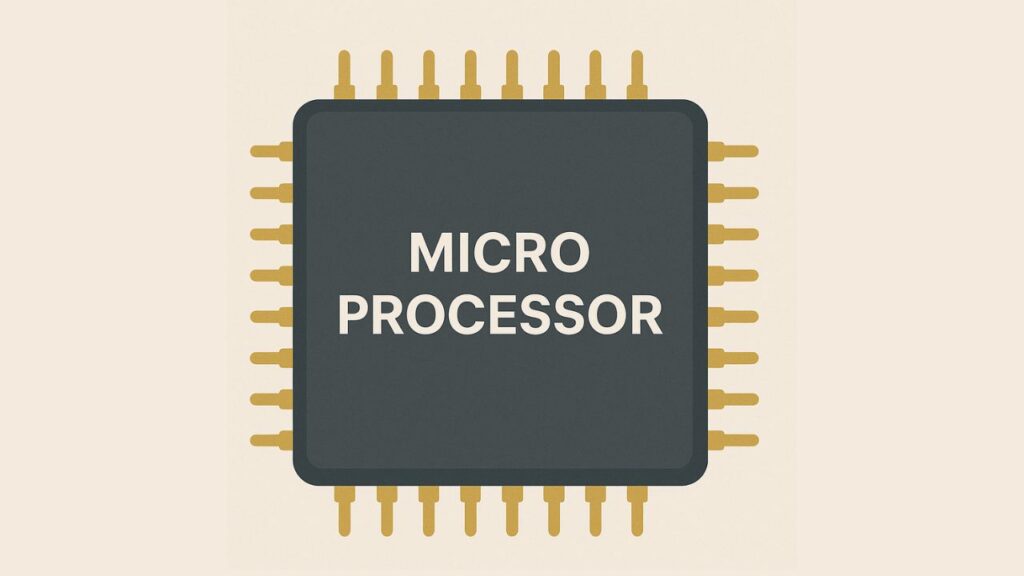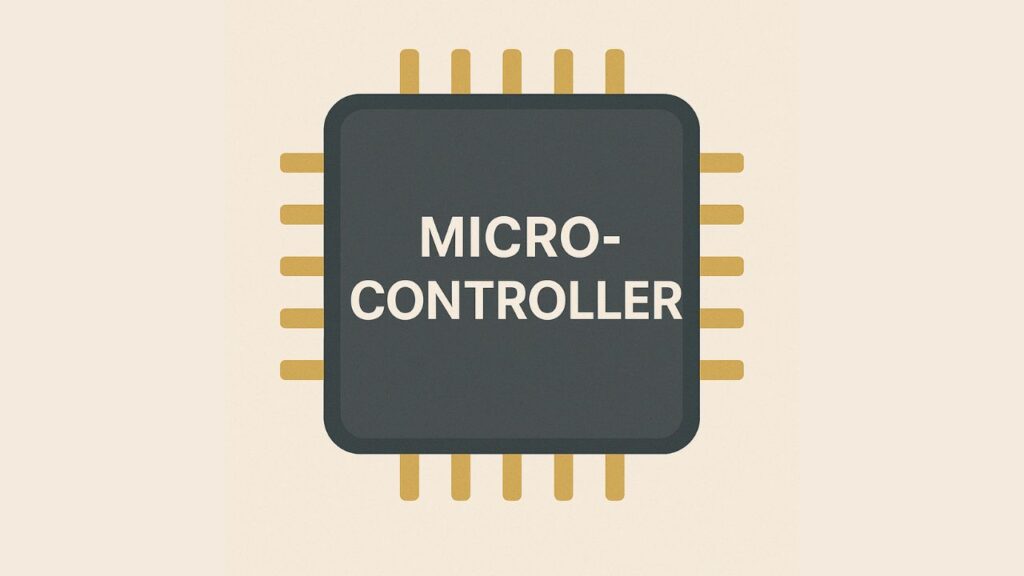This article will mainly talk about the Microprocessor vs Microcontroller. Although they differ greatly in many aspects, microcontroller units (MCUs) and microprocessor units (MPUs) are two types of integrated circuits. These single-chip processors, which use independent logic units to replace outdated multi-component central processing units (CPUs), are both very important for the ongoing advancement of computing technology. Microprocessors and microcontrollers, however, differ greatly in their applications, performance capabilities, chip architecture, and component structure.
Also learn: Pin Diagram of 8085 Microprocessor
In microprocessor vs microcontroller, these two devices differ primarily in that microcontrollers integrate all of the components required for a microcomputer system onto a single piece of hardware. Unlike microprocessors, microcontrollers don’t need complicated operating systems or extra peripherals to work. CPUs are present in both circuits, but microcontrollers additionally incorporate memory, input/output (I/O) devices, and other diverse peripherals.
Microprocessor vs Microcontroller
In microprocessor vs microcontroller, the integrated circuits (ICs) that make up microprocessors and microcontrollers are utilised in a variety of contemporary electronic devices, including computers, laptops, air conditioners, washing machines, and several other automated electronic devices. Automating operations is the main purpose of both microprocessors and microcontrollers.
If you would like to learn more about the differences between microprocessors and microcontrollers, please take a look at this article.
Microprocessor: What is it?
In microprocessor vs microcontroller, it is a processing device that, by certain sets of instructions, transforms data into information, as its name suggests. It is called a microprocessor because it is a very small electronic chip.
To put it another way, a microprocessor is a processing device that is built onto a single chip. The microprocessor is the most crucial component of a computer or other computing device. Because it is only in charge of processing data by instructions to generate information.
The microprocessor serves as the Central Processing Unit (CPU) in microcomputers. The two main components of a typical microprocessor are the Control Unit (CU) and the Arithmetic Logic Unit (ALU). Microprocessors include Intel 8085 and 8086 processing CPUs.
In addition to the ALU and CU, modern microprocessors now have a small memory unit called cache memory. These days, microprocessors are widely employed in many different applications, including medical equipment, multimeters, power plant control, and desktop publishing, etc.
Features of Microprocessor
In microprocessor vs microcontroller, Below is a summary of some of the salient characteristics:
- Diversity: Microprocessors don’t have storage limitations and can do a lot of work. It also has an integrated monitor/debugger application that can handle interruptions.
- Versatility – The microprocessors are regarded as versatile since they may be utilised for a variety of applications by customising the software program.
- Reliability: Because microprocessors are based on semiconductor technology, there is a far lower possibility of failure. As a result, microprocessors are highly dependable.
- High Speed: Millions of instructions can be carried out by a microprocessor every second. They can therefore operate at a very fast pace.
Key Components of Microprocessor
In microprocessor vs microcontroller, the essential parts of a CPU are made up of millions of tiny transistors, resistors, and diodes stacked on semiconductor material in modern microprocessors.
- The arithmetic logic unit (ALU), the central processing unit’s main logic unit, carries out logical operations like mathematical calculations and data comparisons.
- Control Unit (CU): By interpreting instructions and initiating their execution, the CU circuit manages the core operations of the processor.
- Registers are tiny, quick memory spaces that a CPU uses to store information and commands while it performs computations.
- Cache memory: To speed up performance, microprocessors and CPUs store frequently accessed data in cache memory, a high-speed type of memory that is situated near to the CPU.
- Processor cores: Individual processing units are known as cores in microprocessors. Modern processors frequently have many cores (dual-core, quad-core), which enable parallel computing by allowing multiple tasks to be executed simultaneously.
- Input/ Output modules: The I/O components of a microprocessor, including any additional computer peripherals like networking peripherals like Ethernet ports or WiFi units, are essential for controlling the data flow to and from the CPU.
Microcontroller: What is it?
In microprocessor vs microcontroller, A processing unit, a tiny memory (RAM, ROM, EPROM), I/O ports, and other components are all found on a single chip in a microcontroller, which is an electrical system. Thus, a microcontroller is a little microcomputer. It is the main functional component of many electronic devices and is quite small and reasonably priced.
Electronic systems such as air conditioners, washing machines, and refrigerators use microcontrollers to automate their operations in response to user commands. Therefore, the core of all embedded systems, including smart refrigerators, washing machines, and microwave ovens, is a microcontroller.
Microprocessors are used in smart measuring devices, fire detection and other safety equipment, temperature sensing and control devices, and light sensing and control devices, among other applications.
Also learn: Block Diagram of 8085 Microprocessor
Key Components of Microcontroller
Below mentioned are the major components of Microcontroller.
- Central processing unit (CPU): Often called the “brain” of the computer, the CPU is in charge of carrying out commands and managing processes.
- Memory: Non-volatile flash memory (ROM) is used to store the microcontroller’s programming code, while volatile memory (RAM) is used to store temporary data that can be lost if the device loses power.
- Peripherals: A microcontroller may have a number of peripheral parts, including I/O interfaces, timers, counters, analog-to-digital converters (ADCs), and communication protocols (UART, SPI, I2C), depending on the intended use.
In microprocessor vs microcontroller, Microcontrollers are perfect for battery-operated electronic devices like smartphones, smartwatches, and other wearables since they are compact, lightweight, and require relatively little power. They are popular among enthusiasts as well. Programming languages like C, C++, and Python, which are widely used in Windows, Linux, and MacOS operating systems, make it simple to configure consumer-grade programmable microcontrollers like those produced by Arduino or the Raspberry Pi. Microcontrollers are widely used in a variety of professional and industrial use cases, including as industrial automation, transportation safety systems, and prototyping, even though they are accessible to even novice developers.
The microcontroller’s history
In microprocessor vs microcontroller, the following are some significant turning points in the development of microcontrollers:
- In 1975, Intel created the first microcontroller, the Intel 8048.
- In 1993, EEPROM was first introduced.
- Atmel introduced the first microcontroller with flash memory in that same year.
Selecting between a microprocessor vs microcontroller
Some of the functions that microprocessors and microcontrollers can do are similar. Each, however, has distinct advantages and disadvantages based on the needs of the application. Microcontrollers are perfect for most embedded systems because of their inbuilt characteristics, which include power-saving modes for reduced power usage.
Microprocessors are a superior option in situations that call for more sophisticated calculations or processing capacity, but the extra performance and flexibility come at the expense of higher power consumption and a higher price tag. Because of these features, microprocessors are the recommended option for both home computers and industrial supercomputers.
Difference in the Overview between microprocessor vs microcontroller
All of the significant distinctions between microprocessor vs microcontroller are highlighted in the following table.
| Parameter | Microprocessor | Microcontroller |
|---|---|---|
| Definition | Microprocessors can be considered as the heart of a computer system. | One could think of microcontrollers as the central component of an embedded system. |
| What is it? | A microprocessor is a processor with externally attached memory and input/output components. | A microcontroller is a controlling device that has internal memory and an I/O output component. |
| Circuit complexity | Because of the external connection, the circuit is complicated. | There are microcontrollers on chip memory. It’s a simpler circuit. |
| Memory and I/O components | External connections are required for the memory and I/O components. | The I/O and memory components are accessible. |
| Compact system compatibility | Compact systems cannot employ microprocessors. | Compact systems can make use of microcontrollers. |
| Efficiency | Microprocessors are not efficient. | Microcontrollers are efficient. |
| Zero status flag | Microprocessors have a zero status flag. | Microcontroller doesn’t have a zero status flag. |
| Number of registers | Microprocessors have less/ few number of registers. | Microcontrollers have a larger number of registers. |
| Applications | Microprocessors are generally used in personal computers. | Microcontrollers are generally used in washing machines, and air conditioners. |
Difference in the Feature between microprocessor vs microcontroller
| Feature | Microcontroller | Microprocessor |
|---|---|---|
| Purpose | Created for certain applications using embedded systems | Developed for applications involving general-purpose computing |
| Architecture | Computer system on a single chip containing peripherals, I/O interfaces, and on-board memory | CPU with few peripherals, I/O connections, and on-board memory |
| Integration level | Highly integrated | Less integrated |
| System architecture | Single-chip system | CPU + support chips |
| Processing power | Lower power | Higher power |
| Instruction set | Fixed instruction set | More flexible |
| On-board memory | On-chip memory | No on-board memory |
| Input/Output (I/O) | More I/O ports | Fewer I/O ports |
| Peripheral devices | On-board peripherals | External peripherals |
| Cost | Lower cost | Higher cost |
| Power consumption | Lower power | Higher power |
| Applications | Embedded systems | General-purpose |
| Development | Manufacturer-provided integrated development environments (IDEs) with specific programming languages and tools | Standard development tools and languages such as C, C++, and assembly |
| Clock speed | Lower clock speed, typically less than 100 MHz | Higher clock speed, typically greater than 1 GHz |
Conclusion on the microprocessor vs microcontroller
In microprocessor vs microcontroller, A microprocessor is an electronic component that serves as a processing device in a variety of computing systems, including computers, laptops, smartphones, and others, as is evident from the explanation above. Conversely, a microcontroller is a tiny microcomputer that controls many embedded systems, like microwave ovens and washing machines.


